














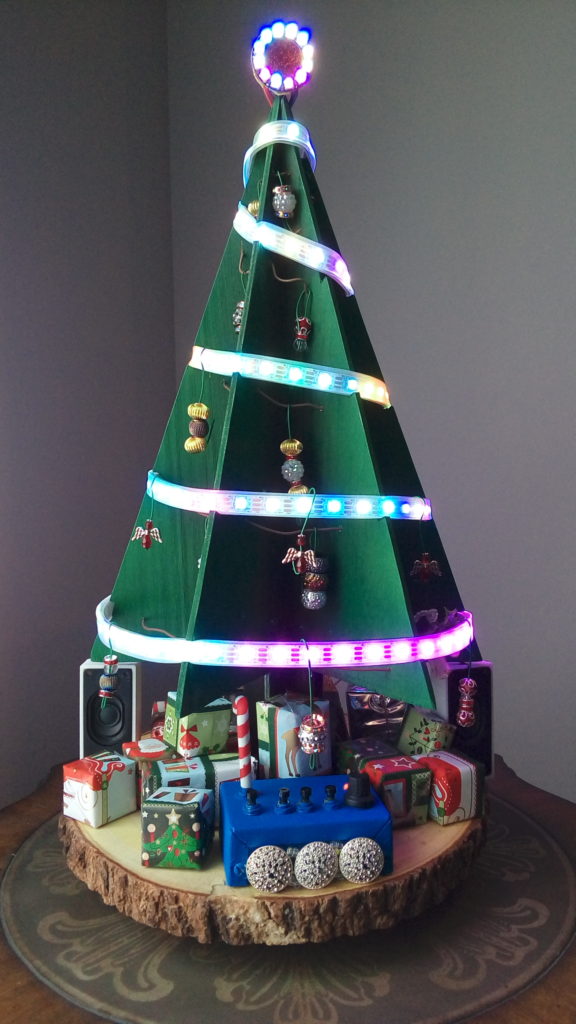
Wishing you the best of the season!

embedded systems to learn and create – 10 years of making, learning and sharing
Members
















Wishing you the best of the season!

New to the raspberry pi or micro-controllers?
Have questions or need expert help?
Drop by this Saturday’s meeting and there will be plenty of friendly folks to answer your questions!
Where: Quality Foods, View Royal, 27 Helmcken Rd #110
When: 9:30-10a Beverages & Conversation
10a Presentation
This is a Hybrid meeting (in-person and on Jitsi)
NOTE: The online server is only available during meeting times, so if you click on the link below and it doesn’t work then there is no meeting and this is normal.
Join Us Online here:

This meeting will be held at Deid’s place. Start time 10am. Email deid@drsol.com if you need the address.
James Presentation is here:
Satellites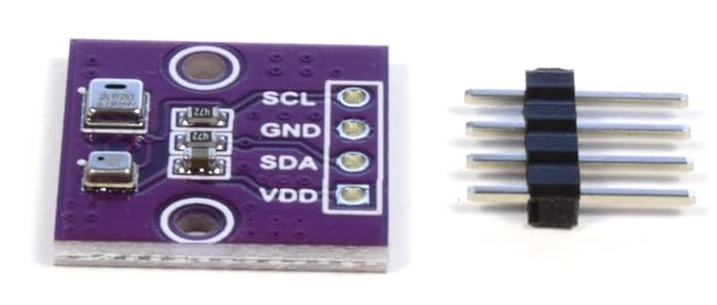
A continuation of Pi Pico SD Card. With the addition of humidity and barometric pressure and more fun with the charting. Deid’s presentation notes are here.
Happy Holidays to everyone. At this meeting we’ll share with each other what cool tech gadgets we received from Santa.

We will meet at Serious Coffee in Esquimalt, which has provided the mezzanine space to us (stairs are inside the coffee shop). Please buy a coffee or beverage on your way in to help support this business.
Where: Serious Coffee, 1153 Esquimalt Rd #27, Victoria, BC
When: 9:30-10a Cocktails & Conversation
10a Presentation
This is a Hybrid meeting (in-person and on Jitsi).
Join Us Online here:

Unsolved Problems is an opportunity for attendees to suggest solutions to projects that are stuck.
For example, George has a 36volt ebike battery pack that reads 25 volts, but the charger won’t begin to charge it, i.e. the charger shows a green light that indicates the battery is fully charged, or not connected. Maybe others have some idea about how to jump start charging.
Where: Quality Foods, View Royal, 27 Helmcken Rd #110
When: 9:30-10a Cocktails & Conversation
10a Presentation
This is a Hybrid meeting (in-person and on Jitsi).
Join Us Online here:

Lynn will share how the Camosun Students are progressing on her Capstone Project.
Where: Quality Foods, View Royal, 27 Helmcken Rd #110
When: 9:30-10a Cocktails & Conversation
10a Presentation
This is a Hybrid meeting (in-person and on Jitsi).
Join Us Online here:

In this session, we’ll get to hear and see Lynn’s trip to Raspberry Pi Central, where it all happens.
We are back at Quality Foods, View Royal, 27 Helmcken Rd #110
9:30-10a Cocktails & Conversation
10a Presentation
This is a Hybrid meeting (in-person and on Jitsi).
Join Us Online here:
By measuring the interior chip temperature over a few seconds of a chip cooled by a heat sink, you can calculate the watts dissipated by the heat sink. The DS18B20 measures temperatures up to 125℃ at the interior of the chip.
This is a useful measurement If you are making your own heat sinks out of copper tubes or folded aluminum sheathing, You can also compare the effectiveness of different heat sink compounds this way.
The presentation is at this bookmark in a longer presentation on how to set up a Raspberry Pi Pico as a Blue Board learning tool. Blue Boards are available for free from George at 250-893-7423

Why just run your own video conferencing server, when you can simultaneously run that AND mail, calendaring, contacts, calls, IM, file sharing, remote backup, and a web-based office suite, all in one intimidating package. Get your own thrift-store Google G Suite going with the open source Nextcloud platform on a tiny Raspberry Pi! Great for the privacy-conscious, the independent, and masochists. We’ll do it the hard way and make configuring Jitsi look like recess at kindergarten (and then do it the easy way). Warning: the hard way will race through dependencies including Apache, PHP, MySQL/MariaDB and openSSL, so expect some mild suffering.
Richard’s Blog here:
Actual process including configuring a web server and database and installing from a source tarball:
https://tech.kosmokaryote.org/2023/11/technology-nextcloud-on-raspberry-pi_22.html –
here are the pdfs
and here
Much briefer post using nextcloudpi via docker from my notes, as originally demoed:
https://tech.kosmokaryote.org/2023/11/technology-nextcloud-on-raspberry-pi.html
9:30-10a Cocktails & Conversation
10a Presentation
This is a Hybrid meeting (in-person and on Jitsi).
Join Us Online here:
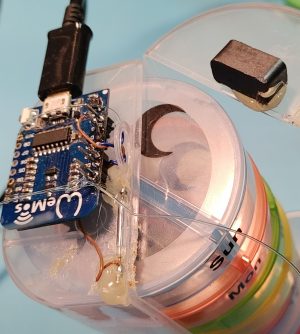
George gets a scolding from Alexa for not opening his pill box on time. Technologies include
George’s presentation .pdf is here
For the meet and greet, George explains how this device can be shipped without the recipients SSID and wifi password, using only 20 bytes of code on the micro controller.
9:30-10a Cocktails & Conversation
10a Presentation
This is a Hybrid meeting (in-person and on Jitsi).
Small Boardroom @ Quality Foods, 27 Helmcken Rd #110 · View Royal
Join Us Online here:
9:30-10am Cocktails & Conversation
10am Presentation

George will tell us more about his USB Keyboard Phrase Typist (aka rubber ducky) project.
This is a Hybrid meeting (in-person and on Jitsi).
Small Boardroom @ Quality Foods, 27 Helmcken Rd #110 · View Royal
Join Us Online here:
9:30-10a Cocktails & Conversation
10a Presentation

Share the projects you have been working on over the summer. This will be a hybrid show and tell using Jitsi, and in person at Quality Foods (up stairs)

Deid will share his Scooter Speedometer project with us.
Event topics
Robotics Microcontrollers Arduino Electronics Education & Technology
9:30-10a Cocktails & Conversation
10a Presentation
This is a Hybrid meeting (in-person and on Jitsi).
Small Boardroom @ Quality Foods, 27 Helmcken Rd #110 · View Royal
Join Us Online here:
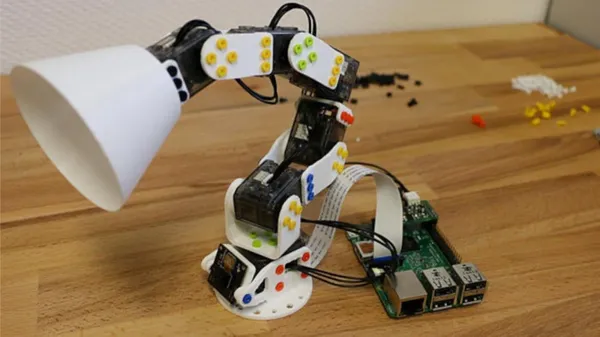
We will be having a discussion about Projects that we are working on, but haven’t shared with the group. These can be projects that are successful or ones that just didn’t work out and have been abandoned. We’ll enjoy hearing about other’s projects, and perhaps even offer to help.
9:30-10a Cocktails & Conversation
10a Presentation
This is a Hybrid meeting (in-person and on Jitsi).
Small Boardroom @ Quality Foods, 27 Helmcken Rd #110 · View Royal
Join Us Online here:
https://meet.vinnythegeek.ca/vicpimakers

George will share his old man savers. Consumer kitchen appliances are designed for one size fits all, not for my personal needs. My needs change as I age, and I need alerts for faults.
George’s presentation is here: https://docs.google.com/presentation/d/107pIcvgMJfG5TxZLBdD5MD1n3QWQPcR2-Dehy2xVzjI/edit?usp=sharing
His code .pdf file is here:
9:30-10a Cocktails & Conversation
10a Presentation
QCollege has welcomed us back to meet in-person. We thank them for their support.
We will be holding a Hybrid meeting (in-person & Jitsi).
9:30-10a Cocktails & Conversation (virtual)
10a Presentation

Mark will share his work in stripping tracking info on Firefox on a Pi, and how to load it onto your Firefox.
QCollege has welcomed us back to meet in-person. We thank them for their support.
Suite 303 – 771 Vernon Ave · Victoria, BC
We will be holding a Hybrid meeting (in-person & Jitsi).
https://meet.vinnythegeek.ca/vicpimakers
Mark’s presentation .pdf is here.

Share the projects you have been working on over the summer. This will be a hybrid show and tell using Jitsi, and in person.
QCollege has welcomed us back to meet in-person. We thank them for their support
Suite 303 771 Vernon Ave · Victoria, BC
9:30-10a Cocktails & Conversation (virtual)
10a Presentation
https://meet.vinnythegeek.ca/vicpimakers
We will be holding a Hybrid meeting (in-person & Jitsi).

Come share your recent projects with the group, online or in person.
9:30-10a Cocktails & Conversation (virtual)
10a Presentation
QCollege has welcomed us back to meet in-person. We thank them for their support.
George shared some pico links
https://learn.adafruit.com/welcome-to-circuitpython
https://learn.adafruit.com/getting-started-with-raspberry-pi-pico-circuitpython/blinky-and-a-button
https://learn.adafruit.com/getting-started-with-raspberry-pi-pico-circuitpython/neopixel-leds
Virtual…

I decided to build my own Raspberry Pi music player using Python, as the available players didn’t really do what I wanted. This is Python at the beginner level, and the saga of making the player. Mostly it is about the little things in Python that caused me to stumble for a while. The music player is functional, the interface isn’t elegant, and I learned a few things about Python programming. – Don
9:30-10a Cocktails & Conversation (virtual)
10a Presentation
Here are Don’s presentation .pdf and(change to .py) .txt file.
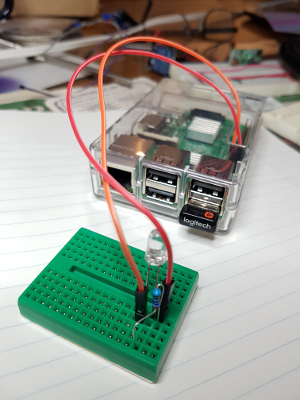
Intro to Pi & Others Discussion. We will review the course materials, and discuss improvements, and getting the word out.
Intro to Pi & Others is a four part series with each session building on the previous sessions, where Pi basics of software and hardware will be explored.
9:30 AM to 11:30 AM PDT

9:30-10a Cocktails & Conversation
10a Presentation
Share the projects you have been working on over the summer. This will be a virtual show and tell using Jitsi.
https://meet.vinnythegeek.ca/vicpimakers
Sadly, we are still dealing with Covid-19, and the meetings will be virtual in the month of September.
Deid’s Clock presentation is here.

9:30 AM to 11:30 AM PST
Don will share with us some cool hardware additions to automate your Pi.
9:30-10a Cocktails & Conversation
10a Presentations
Presentation material is here.
Jitsi Virtual Meeting
https://meet.vinnythegeek.ca/vicpimakers
Please contact markg@vicpimakers.ca if you are having trouble connecting to the meeting server.